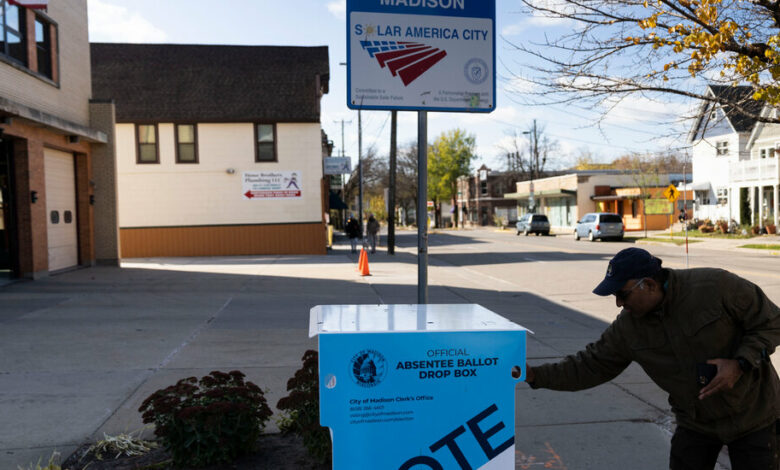Wisconsin Supreme Court Says Ballot Drop Boxes Can Be Used Again

The new liberal majority of the Wisconsin Supreme Court said Friday that ballot drop boxes can be widely used again in the state, reversing a ruling two years ago when the court had a conservative majority.
On a practical level, the ruling changes how Wisconsin, a deeply divided state that could sway the Electoral College, will conduct an election that is just four months away. On a symbolic level, the judicial reversal changes will likely fuel Republican claims that the court has become a deeply partisan force — claims Democrats made not long ago, when most justices were conservative.
Drop boxes were used for years in Wisconsin as one of several ways, along with early in-person voting and voting by mail, for voters to return their ballots before Election Day. The widespread use of drop boxes in 2020, during the COVID-19 pandemic, drew the ire of Republicans and led to a lawsuit that the previous court majority ruled largely banning their use.
“Our decision today does not compel or require municipal officials to use drop boxes,” Justice Ann Walsh Bradley, a liberal, wrote Friday for the four-justice majority. “It merely recognizes,” she added, what Wisconsin law “has always meant: that officials may lawfully use secured drop boxes in an exercise of their statutorily granted discretion.”
Her conservative colleague, Justice Rebecca Bradley, disagreed, writing in a dissent that “the majority has once again abandoned the rule of law in an effort to advance its political agenda.”
Friday’s ruling is part of a broader effort by Democrats and progressive groups to get the Wisconsin Supreme Court to weigh in on some of the state’s thorniest policy issues. After liberals won a 4-3 majority last year, the court ordered the redrawing of state legislative districts, which had long been rigged in Republican favor. Earlier this week, the justices announced they would hear a case asking them to consider whether the state Constitution includes a right to abortion.
For much of the 2010s, Democrats were relegated to Wisconsin’s policymaking sidelines as Gov. Scott Walker and his fellow Republicans in the legislature reshaped the state in a more conservative image, including by weakening the power of unions. When the union limits were challenged, the Wisconsin Supreme Court, then controlled by conservatives, gave the new policy a judicial blessing.
After Gov. Tony Evers, a Democrat, won the 2018 election and was re-elected in 2022, the state Supreme Court remained a hurdle for liberals. The conservative majority ruled against ballot boxes and created a “least changes” standard for legislative district redistricting that cemented Republican advantages. The court also said that officials appointed by Mr. Walker could remain in their posts after their terms expired until the Republican-controlled state Senate confirmed replacements selected by Mr. Evers — which senators often refused to do.
On Friday, Mr Evers called the ballot box ruling a “victory for our democracy” and said: “We will continue to fight to ensure that every eligible voter can cast their vote safely, securely and as easily as possible.”
Madison Mayor Satya Rhodes-Conway, a Democrat, also praised the ruling in a statement. “I am so glad that common sense prevailed and that Wisconsin now has a Supreme Court that is interested in expanding voting rights, rather than restricting them,” she said.
Unlike some other states, the Wisconsin Supreme Court is officially nonpartisan. Justices are elected on a statewide ballot to staggered 10-year terms. Yet the court’s ideological lines have long been clear, and even the appearance of neutrality has disappeared from justices’ election campaigns.
When Judge Janet Protasiewicz ran for office last year, she said she believed abortion should be “a woman’s right to choose” and declared that the state’s legislative maps were “rigged.” The race was the most expensive judicial election in U.S. history, and Judge Protasiewicz’s victory flipped the court, which previously had a 4-3 conservative majority, into liberal hands.
There is at least a chance that some of the court’s latest rulings will not last. A liberal justice whose term expires next year is not running for re-election, and conservatives could retake the majority if they win that seat. The campaign is already in full swing.




